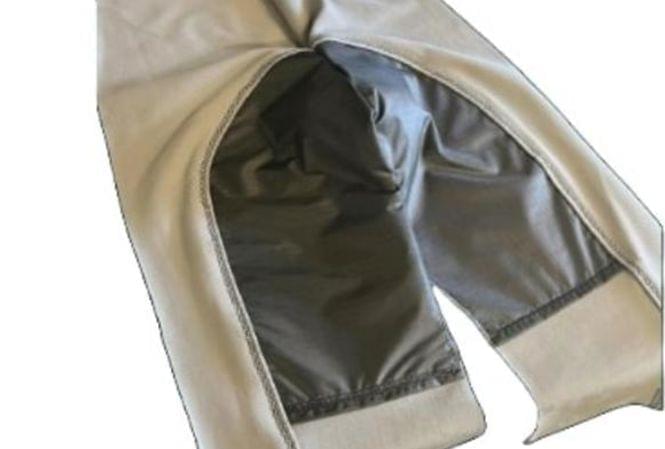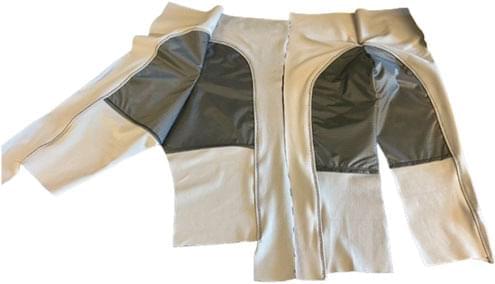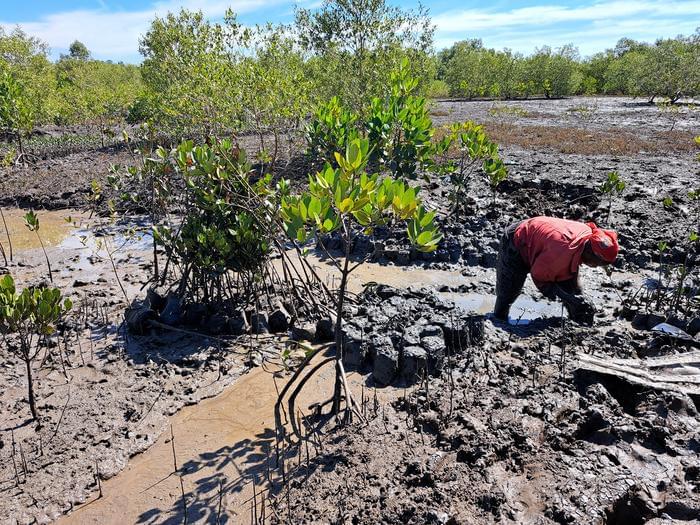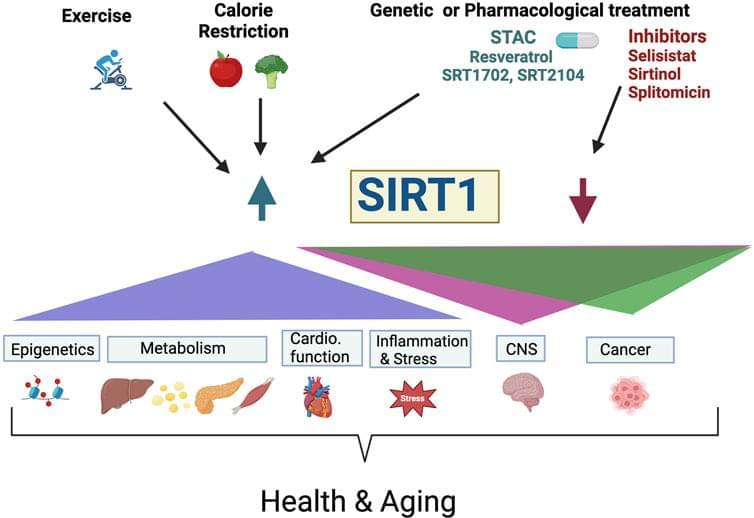Sam Altman and Arianna Huffington told me that they believe generative AI can help millions of suffering people. I’m not so sure.
Page 261
Jul 12, 2024
Scientists unveil prototype spacesuit system that recycles urine as drinking water
Posted by Raphael Ramos in categories: space, sustainability
Researchers at Cornell University have designed a novel in-suit urine collection and filtration system, or “Dune” system,” to “promote astronaut wellbeing.”
Jul 12, 2024
Game developer says Intel should recall its defective, crash-prone CPUs
Posted by Raphael Ramos in categories: computing, entertainment
Facepalm: Crashes experienced by customers owning recent high-end Intel processors aren’t just software or BIOS-related issues. Alderon Games founder Matthew Cassells says Chipzilla has made his company’s life much more complicated than it should be. The game developer has experienced considerable Intel CPU problems, including crashes, instability, and memory corruption.
The number of people and organizations forced to experience crashes and general instability on Intel’s latest CPU models keeps growing. Now, a game developer is blatantly pointing the finger at the Santa Clara corporation and its alleged “defective” products.
“Despite all released microcode, BIOS, and firmware updates, the problem remains unresolved,” Cassells said.
Jul 12, 2024
German Navy to replace aging 8-inch floppy drives with an emulated solution for its anti-submarine frigates
Posted by Zola Balazs Bekasi in category: military
The German Navy is searching for a new storage system to replace the aging 8-inch (20cm) floppy disks which are vital to the running of its Brandenburg class F123 frigates. According to an official tender document, the ideal answer to the German Navy’s problems would be a drop-in floppy disk replacement based upon a storage emulation system, reports Golem.de.
Germany’s Brandenburg class F123 frigates were commissioned in the mid 1990s, so it is understandable that floppy disks were seen as a handy removable storage medium. These drives are part of the frigates’ data acquisition system and, thus “central to controlling basic ship functions such as propulsion and power generation,” according to the source report.
Jul 12, 2024
Frontiers: The current waste management system within the Extravehicular Mobility Unit (EMU) consists of a disposable diaper—
Posted by Quinn Sena in categories: biotech/medical, food, health
The Maximum Absorbency Garment (MAG)—that collects urine and feces during extravehicular activities (EVAs) that last up to 8 h. Such exposure to waste for prolonged periods of time contributes to hygiene-related medical events, including urinary tract infections and gastrointestinal distress. Historically, prior to using the MAG, astronauts have limited their food intake or eaten a low-residue diet before embarking on physically demanding spacewalks, reducing their work performance index (WPI) and posing a health risk. Furthermore, the current 0.95 L In-suit Drink Bag (IDB) does not provide sufficient water for more frequent, longer-range spacewalks, which carry greater potential for contingency scenarios requiring extended time away from a vehicle.
Jul 12, 2024
Q&A About the Universe with Top Physicist Neil Turok
Posted by Dan Breeden in categories: physics, space

Welcome to Rethinking the Foundations brought to you by Curt Jaimungal at Theories of Everything. Today, Professor Neil Turok answers questions from the audience! This is Part 2 to Neil’s Rethinking the Foundations episode. Part 1 can be seen here: • Rethinking the Foundations of Physics…
Listen on Spotify: https://open.spotify.com/show/4gL14b9…
Continue reading “Q&A About the Universe with Top Physicist Neil Turok” »
Jul 12, 2024
Discovery of Carbon Stock in 20-Year-Old Mangrove Plantations
Posted by Laurence Tognetti, Labroots Inc. in categories: climatology, sustainability
“Periodic and regular monitoring of mangroves can provide useful data on survival and success of restoration efforts and can help devise adaptive management strategies as and when needed,” said Dr. Rupesh Bhomia.
What is the capacity of carbon storage for planted mangroves? This is what a recent study published in Science Advances hopes to address as a team of international researchers led by the USDA Forest Service investigated the length of time that planted mangroves can store carbon, as such insights could provide steps to replenish mangrove populations throughout the world since these populations have seen a 35 percent decrease over the past 50 years. This study holds the potential to help mitigate the impacts of climate change by naturally storing carbon and keeping it from worsening climate change across the globe.
Image of mangrove nurseries in Maputo, Mozambique. (Credit: Vilma Machava, U.S. Forest Service International Programs)
Continue reading “Discovery of Carbon Stock in 20-Year-Old Mangrove Plantations” »
Jul 12, 2024
AI model uses human irrationality to predict our next moves
Posted by Shubham Ghosh Roy in category: robotics/AI
Researchers have devised a new model to predict human behavior taking into account our ‘sub-optimal’ decision-making.
Jul 12, 2024
Frontiers: Aging is linked to a time-associated decline in both cellular function and repair capacity leading to malfunction on an organismal level
Posted by Shubham Ghosh Roy in categories: biotech/medical, genetics, life extension
Increased frailty, higher incidence of diseases, and death. As the population grows older, there is a need to reveal mechanisms associated with aging that could spearhead treatments to postpone the onset of age-associated decline, extend both healthspan and lifespan. One possibility is targeting the sirtuin SIRT1, the founding member of the sirtuin family, a highly conserved family of histone deacetylases that have been linked to metabolism, stress response, protein synthesis, genomic instability, neurodegeneration, DNA damage repair, and inflammation. Importantly, sirtuins have also been implicated to promote health and lifespan extension, while their dysregulation has been linked to cancer, neurological processes, and heart disorders. SIRT1 is one of seven members of sirtuin family; each requiring nicotinamide adenine dinucleotide (NAD+) as co-substrate for their catalytic activity. Overexpression of yeast, worm, fly, and mice SIRT1 homologs extend lifespan in each animal, respectively. Moreover, lifespan extension due to calorie restriction are associated with increased sirtuin activity. These findings led to the search for a calorie restriction mimetic, which revealed the compound resveratrol; (3, 5, 4′-trihydroxy-trans-stilbene) belonging to the stilbenoids group of polyphenols. Following this finding, resveratrol and other sirtuin-activating compounds have been extensively studied for their ability to affect health and lifespan in a variety of species, including humans via clinical studies.
Aging is associated with a progressive metabolic, physiological decline and can be genetically and environmentally modified (Helfand and Rogina, 2000). The search for the molecular basis of aging led to the identification of several pathways associated with longevity including insulin/IGF-1, target of rapamycin (TOR) and the Sirtuins (Kenyon, 2010; Chen et al., 2022). The sirtuins are a family of nicotinamide adenine dinucleotide (NAD+)-dependent histone deacetylases (Haigis and Sinclair, 2010; Hall et al., 2013; Bonkowski and Sinclair, 2016; Dai et al., 2018; Singh et al., 2018). Sirtuins are also categorized as deacetylases because they catalyze the post-translational modification of signaling molecules including decrotonylation, ADP-ribosylation, diacylation, desuccinylation, demalonylation, depropynylation, delipoamidation, and deglutarylation, and other long-chain fatty acid deacylations (Feldman, Baeza, and Denu, 2013; Choudhary et al., 2014; Fiorentino et al., 2022).
In mammals, there are seven members (SIRT1-SIRT7) including SIRT1, SIRT6 and SIRT7, which are localized to the nucleus, and SIRT3, SIRT4, and SIRT5 localized to the mitochondria, SIRT2 localized to the cytosol, and SIRT1 also localized to cytosol in some cell types (Bonkowski and Sinclair, 2016). As histone deacetylases, sirtuins function by removing acetyl groups from the target proteins resulting in either inhibition or activation. SIRT1, SIRT6 and SIRT7 have many functions including: regulators of transcription, control of cellular metabolism, DNA repair, cell survival, tissue regeneration, inflammation, circadian rhythms and neuronal signaling (Haigis and Sinclair, 2010). SIRT3-5 are important for switching to mitochondrial oxidative metabolism during CR and modulate stress tolerance (Verdin et al., 2010).
Jul 12, 2024
Tracking Ozempic’s Nausea Side Effect to Specific Neurons May Lead to Better Drugs
Posted by Shailesh Prasad in categories: biotech/medical, food, neuroscience
The neurons that produce a sick feeling and food aversion are distinct from those that induce a feeling of fullness.
By Mariana Lenharo & Nature magazine
Next-generation anti-obesity drugs such as Wegovy can melt away weight — but they can also cause intolerable nausea. Now scientists have pinpointed a brain pathway that is involved in this common side effect, raising the prospect of effective weight-loss drugs that don’t make people sick1.
















